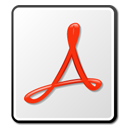Difference between revisions of "Design and analysis of experiments"
Jump to navigation
Jump to search
Kevin Dunn (talk | contribs) |
Kevin Dunn (talk | contribs) |
||
| Line 66: | Line 66: | ||
===Videos from 2014=== | ===Videos from 2014=== | ||
[[Design_and_analysis_of_experiments_(2014)|See the webpage from 2014]] | [[Design_and_analysis_of_experiments_(2014)|See the webpage from 2014]] | ||
{{#widget:Vimeo|id=87882235}} | {{#widget:Vimeo|id=87882235}} | ||
{{#widget:Vimeo|id=88125382}} | {{#widget:Vimeo|id=88125382}} | ||
Revision as of 11:23, 4 January 2016
This is a work in progress. It will be completed by the end of the day on 04 January 2016.
Learning outcomes
- Learn the basic terminology of experiments: responses, factors, outcomes, real-world units vs coded units, confounding
- Analyze and interpret data from an experiment with 2, 3 or more factors by hand
- Use R to do the analysis, and interpret the various plots, such as the Pareto plot
- Analyze and interpret data from an experiment with 3 or more factors
- Recognize when to use a fractional factorial, to go mostly the same results as from a full factorial
- Understand when to use screening experiments
- Use the concepts of response surface methods to systematically reach an optimum
- What you can do when you make a mistake, or hit against constraints.
Extended readings/practice
- Don't accept what is often believed to be true: always experiment.
- In case you've been wondering how the trade-off table was constructed.
- You must cover steps 16, 21 and 22 of the detailed software tutorial to master this section of the course.
Resources
 Class notes 2015
Class notes 2015 Class notes 2014
Class notes 2014- Textbook, chapter 5
- Quizzes (with solutions): attempt these after you have watched the videos
Tasks to do first Quiz Solution Watch videos AAA Quiz Solution Watch videos BBB Quiz Solution Watch videos CCC Quiz Solution Watch videos DDD Quiz Solution Watch videos EEE Quiz Solution Watch videos FFF Quiz Solution
Class videos from prior years
Videos from 2015
| 00:00 | No video | Script |
Videos from 2014
Videos from 2013